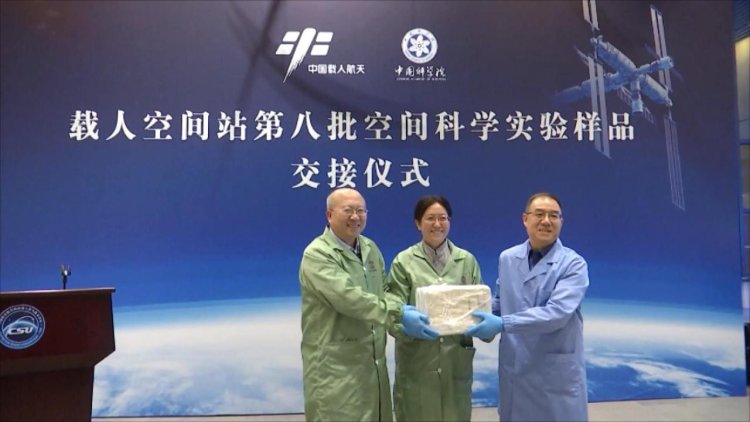Specimens from "Shenzhou-19" Space Experiments Delivered to Researchers
Samples from experiments conducted in space returned to Earth on Wednesday alongside the crew of China's Shenzhou-19 mission. They have now been handed over to scientists in Beijing for further investigation. At a ceremony held on Wednesday...

At a ceremony held on Wednesday evening at the Technology and Engineering Center for Space Utilization at the Chinese Academy of Sciences, the materials were distributed to various research teams.
The three astronauts from the Shenzhou-19 mission completed a six-month stint in space, bringing back 37.25 kilograms of samples from 25 experiments spanning space life science, materials science, and new technologies.
Of these, twenty samples focus on life sciences and include bone cells and osteoblasts, human bronchial epithelial cells, early embryos of humans and animals, protein samples, and fruit flies. This represents the most diverse range of biological samples returned to Earth since the onset of operations at the Chinese space station in late 2022.
The biologically sensitive samples were quickly transported to Beijing following the spacecraft’s landing at the Dongfeng site in western Inner Mongolia.
Fruit flies, similar to white mice and zebrafish, are often utilized in such experiments due to their genetic similarities to those diseases affecting humans. Research involving fruit flies has aided in securing six Nobel Prizes.
The flies returned by the Shenzhou-19 crew are descendants of those sent to the space station by the Tianzhou-8 cargo spacecraft in November 2022 for experiments examining their reproduction and growth under conditions resembling those on the Moon or Mars, environments characterized by minimal gravity and a lack of magnetic fields.
Three generations of these fruit flies have successfully been bred aboard the space station.
Li Yan, a researcher at the Institute of Biophysics at CAS, remarked, "The in-orbit video shows that in space, fruit flies don't adapt to an environment without gravity and may float around or crash. Through meticulous analysis, we have also discovered that some of their instinctive behaviors, such as courtship and feeding, also underwent abnormal changes, requiring us to conduct more in-depth and detailed data mining."
Li added, "We humans may leave the Earth and head for space in the future, like the moon, Mars, and even interstellar space, where there is zero-gravity and an extremely low magnetic field environment. It is unknown whether living beings can survive, reproduce, have normal brain functions, and develop normal behavioral patterns in such an environment. So through such pre-research, we can gain an early understanding and explore exactly what kind of mechanism-based changes have occurred within it."
Additionally, twenty-two other samples from the Shenzhou-19 mission, including high-strength steel and lunar soil reinforcement materials, will soon be sent to Beijing.
Max Fischer for TROIB News
Discover more Science and Technology news updates in TROIB Sci-Tech












